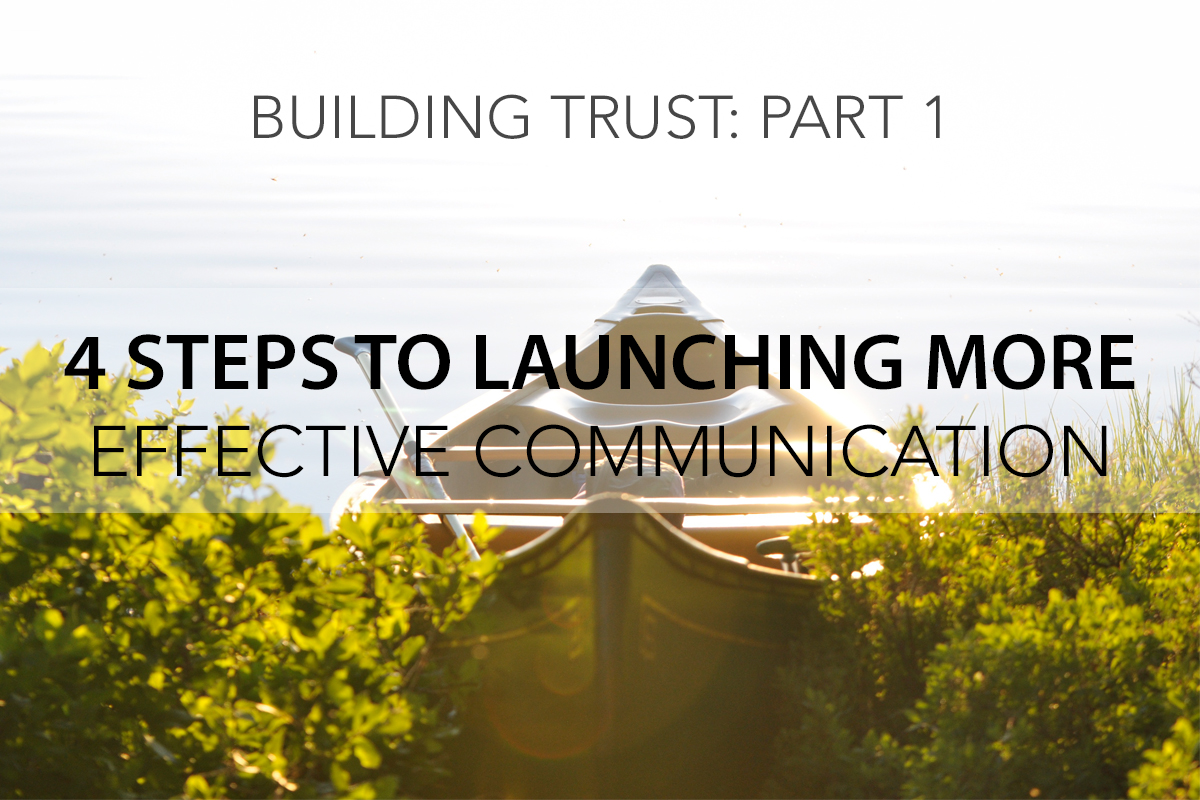4 Steps to Launching More Effective Communication
The 6 Trust Gauges to the right graphically describe how trust works among people and in organizations. All people have expectations of themselves and others, but they may not be understood, agreed upon, or fair. These expectations fall into one or more of the following categories: communication, character, concern, competence, connectedness, and consistency. Trust is built when we prove reliable by meeting the expectations others have of us in these six areas.
Building trust is imperative to the health of your organization. Juggling six categories to start can be overwhelming. So, begin by focusing on just one. Communication.
Why is communication important in trust?
Trust is facilitated by communication between people and groups. Sending clear messages and listening are the two primary mechanisms for effective communication. Sending clear messages reduces the potential for miscommunication while listening increases the likelihood of accurately hearing the message as well as shows respect to the sender.
Here are just four simple steps to keep in mind as you work on communicating better.
1. Know the benefits of communicating effectively.
It is a lot easier to work towards a goal once you know what the reward is. By seeking clear communication, you will have the opportunity to:
Explain and clarify expectations
Seek feedback from others
Share perceptions
Test assumptions and ideas
Disclose feelings
Explain changes
The result of the above 6 points: a less stressful environment. Doesn't that seem worth the effort?
2. Increase the frequency and depth of conversations.
Both the frequency and the depth of conversations are important in cultivating and maintaining trust. For example, proximity of offices can significantly influence how often staff members talk with one another. Those members who come in contact often during the day or week have greater opportunity to dialogue. On the other hand, office doors that are often closed may communicate that the person is not available or is too busy to talk.
3. Allow for both unplanned and also structured communication.
Research has shown it is often through casual, unplanned social interaction that issues which can lead to distrust are resolved and perceptions are corrected or adjusted. Such communication can take place in unstructured meetings such as in a hallway, over a cup of coffee, or at lunch. However, other significant communication can be accomplished through structured gatherings such as staff meetings. This is why well designed and facilitated meetings are so important.
4. Practice self-disclosure.
Self-disclosure can help to avoid misunderstandings. Self-disclosure is revealing some aspect of who you are including thoughts, feelings, ideas, and fears. This practice can help prevent or correct other’s misinterpretations of you.
Communication is vital to cultivating trust. When communication is limited or when leaders are not relational or accessible, people may begin to read into events, make assumptions, and ultimately distrust.
Do you personally seek to communicate clearly and regularly with those around you?
Does your organization seek to communicate clearly and regularly with your constituents?
Read the next posts in this series, Part 2: Character and Part 3: Concern.
And stay tuned for posts on the rest of The Trust Gauges! For more on cultivating trust, read the article "Cultivating Trust in Your Organization" in our book FIT – Improving the Leadership Health of Yourself and Others.
Jay Desko is the CEO of The Center Consulting Group and brings experience in the areas of organizational assessment, leadership coaching, decision-making, and strategic questioning. Jay’s degrees include an M.Ed. in Instructional Systems Design from Pennsylvania State University and a Ph.D. in Organizational Behavior and Leadership from The Union Institute.






![Preparing for the (Expectedly) Unexpected [VIDEO]](https://images.squarespace-cdn.com/content/v1/571fc0ea1d07c0fd6d72c167/e4193bcf-29f7-46c2-be12-9116791d40cf/unexpected+blog.png)